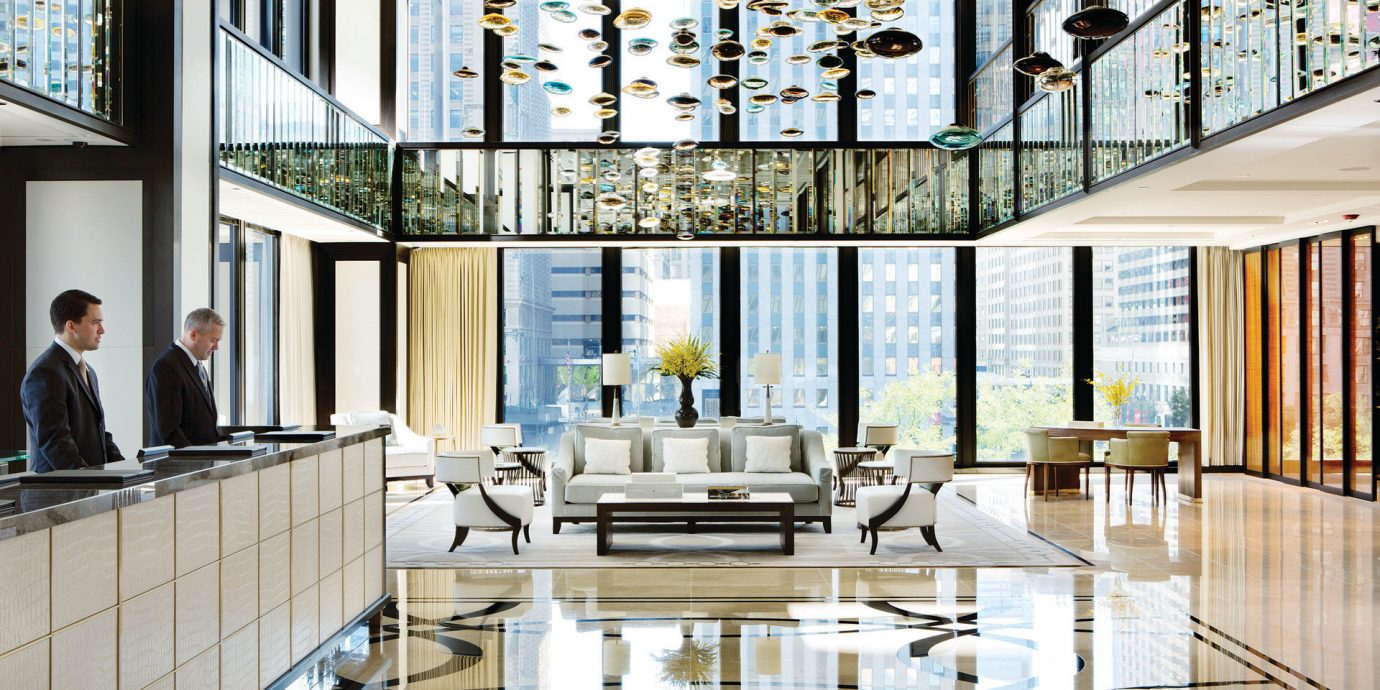Businesses often underestimate the importance of the areas of sound and smell in their Customer Experience. However, these two areas are crucial to get right—or you risk ending your Customer Experience on a sour note.
This underexploited area is why I was so keen to get Simon Faure-Field, CEO of Equal Strategy, an experience design consultancy, on a recent podcast. Faure-Field is an expert in sound and smell as part of the Customer Experience. Equal Strategy helps organizations use their Customer Experiences’ sounds and smells strategically. He shared with us why many Customer Experience design projects overlook sound and smell.
The Dulcet Tones of Sound Design for CX
Organizations should realize that sound is primal, per Faure-Field. Even before we were born, he says, we were familiar with the rhythm of our mother’s heartbeat. Moreover, customers hear things in your experience whether you were deliberate about them or not, and, unfortunately, most organizations are not intentional about how the experience sounds.
Faure-Field says hold music in a call center is a moment in Customer Experience often overlooked. It is also where his team started creating a more brand-aware experience for their clients.
As a key customer touchpoint, what happens once the customers call your organization is vital. Unfortunately, more often than not, the hold music is a much bigger distraction than organizations intend. For example, generic hold music usually doesn’t tie in with the brand unless you want to be a generic brand. Moreover, if you don’t customize it, the hold music could be the same music playing on the competitor’s hold, which does little to differentiate a brand from the competition.
To design a better moment in sound, Faure-Field recommends thinking of your brand as a person. Start by answering the following questions:
- What would the brand persona’s personality be?
- How would it interact with people?
- How do you want people to feel once they reflect upon their conversation with the brand persona?
After determining your responses to these critical questions, you can design a sound experience that reflects these answers. Faure-Field says when you know how you want your brand to connect with specific segments of the market, his team puts together music that fits that positioning.
For example, if you were a five-star hotel, your sound design should fit your clientele type. Five-star hotels can be cool and funky, elegant and classic, or somewhere in between. Faure-Field says if you’re going to the W, the vibe is hip with a high energy level; the music would reflect that. However, at a traditional classic hotel brand, the atmosphere is elegant and discerning; the music should convey those values.
Faure-Field says that when designing a soundscape for a brand, a vital area is how music can subconsciously influence our behavior. For example, if you were making a jogging playlist, you would want to put high-energy music on it, not ballads or dreamy classical music. Faure-Field says that’s because subconsciously, the body will sync itself to the rhythm and speed of the music.

Faure-Field’s team also considers the desired behavior their client wants. Do they want customers to relax or feel energized? Do we want them bouncing off the walls or getting sleepy? The predetermined behavior goal determines the beats-per-minute and energy level of the music.
Moreover, Faure-Field adds, the team considers the emotional aspects of music. When it comes to non-visual senses, there are direct and indirect categories of effects on you. With music, an immediate impact is that you recognize the sounds and you like (or dislike) them, which is a feeling you have. An indirect or secondary effect is that the song is associated with memory and the sounds of it help you encode memories, even at a nonconscious level.
All of these emotional aspects are already in your Customer Experience right now. However, many organizations were not deliberate enough about them, so they left the details up to chance that they would produce the right results. Still other organizations don’t even know the types of emotions they should be evoking with their Customer Experience, let alone the music! In these cases, we always recommend doing research about emotions, like our Emotional Signature® research, that tells you what kinds of emotions your Customer Experience evokes currently, as well as help uncover the hidden wants and needs of your customer base.
Smelling the Experience Makes Scents
Music makes sense to me. Determining the types of music that your customers are likely to fancy and how energizing or relaxing you want it seems reasonable. However, the smell area feels more foreign to me. I asked Faure-Field, how do you smell design your experience? Faure-field says that when he thinks of sound and scent and how they seem to be different senses, the two work hand-in-hand, including their arousal qualities. What you hear and what you smell are aligned, he says.
Faure-Field says that they categorize scents by whether they are high-arousal or low-arousal. For example, if you have challenges trying to get to sleep at night, vanilla or lavender are low-arousal scents that can help you fall asleep. On the other hand, if you’re feeling a little bit sleepy, peppermint is a high arousal scent that wakes you up.
The Equal Strategy team works with a casino in Singapore on smell design. There, a casino is the only building where people can smoke indoors. Also, gaming tables where people can smoke make significantly more money than non-smoking tables. However, many people don’t like the smell of tobacco, so the team’s challenge is to eliminate that smell. The team responded by using a scent that cut through the smell of tobacco.
Faure-Field says you can also use scent as a way to trigger behavior, like a craving. Walmart discovered when they used green apple scent where they were selling green apples, people bought significantly more of them.
This part of the smell area makes sense to me. If you smell the fresh ground coffee, you want coffee. Freshly baked bread is another smell that usually makes people want to buy something once they encounter it.
You can’t turn the nose off, Faure-Field explains, and the sense of smell is the only sense directly connected to memory and emotions. Moreover, the nose is also unfiltered; you can’t ignore it, even if you want to desperately. Faure-Field remembers a time on a flight that someone had been ill in the sick bag, and it traveled through the plane.
It is also about getting attention. Faure-Field recalls that when a nightclub in London ran a test using coconut smell, the Malibu Rum sales went up by three to four hundred percent.
When the Equal Strategy team designs smell for clients, their fragrances can contain many ingredients, up to 45 or more. These sophisticated blinds allow them to use top notes that could be high-arousal scents like citrus or peppermint, making people immediately feel that refreshing sensation when they walk into their space. Blends enable the team can play around with different notes that the top in the middle and the base. If they want to make people feel relaxed, they use vanilla but add citrus on the top to refresh them when they enter the space. While these two scents create a conflicting behavioral scent initially, over time, the effects of the top note are not as noticeable to us, and the brain will concentrate on the vanilla scent, which has a more of a lingering presence. Then, he says, vanilla has that calming effect that you may want in that space.
So, What Do You Do With This Information?
The science of sounds and smells and their influence on customer behavior is fascinating. However, you are probably wondering what you should do to address them in your experience.
Faure-Field says that determining the brand’s persona and what the objectives are for the space they are designing for is a vital first step. Once you understand these goals, then you can move forward with the design. Also, Faure-Field says music now is so much more accessible for businesses in a wide range of offerings, from simple to professionally compiled. Moreover, you can buy essential oil setups that can create many of these effects on a smaller scale. If your staff are a bit sleepy in the office, install a water-based essential oil system and drop in some peppermint. He says it’s a quick, easy, and scientifically-proven way to make your team more productive.
Our nonconscious processes are always running in the background processing information. We have several inputs of information, too, from visual communication to sounds we hear, the things that we touch, and more. Our automatic system is processing those bits of information by pulling up memories and feelings, and associations based on that stimuli. These stimuli are part of their experience, whether you designed them to be or not. The question is, are they producing the type of associations you want for your brand?
Unfortunately, if you haven’t been deliberate about your approach to sound and smell, they probably aren’t—and that sounds like it really stinks.
To hear more about this idea in more detail, listen to the complete podcast here.
Colin Shaw is the founder and CEO of Beyond Philosophy, one of the world’s leading Customer experience consultancy & training organizations. Colin is an international author of six bestselling books and an engaging keynote speaker.
Follow Colin Shaw on Twitter @ColinShaw_CX




